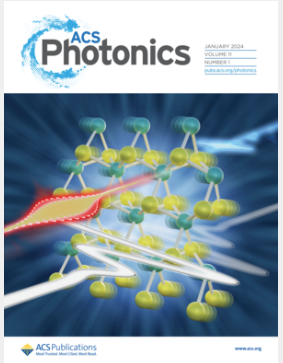Efficiency Enhancement of InP-Based Quantum Dot Light-Emitting Diodes by Introducing a Phosphorescent-Dye Sensitizer in a Hole Transport Layer
IF 6.5
1区 物理与天体物理
Q1 MATERIALS SCIENCE, MULTIDISCIPLINARY
引用次数: 0
Abstract
Low-toxicity indium phosphide (InP) quantum dots (QDs) have attracted considerable attention for their environmental benefits. However, compared to conventional high-performance cadmium-based QDs, InP-QDs suffer from weaker electron confinement, which leads to significant electron accumulation and nonradiative recombination in InP-based quantum dot light-emitting diodes (InP-QLEDs). In this work, we propose introducing the sensitizer as the external exciton recombination center within a hole transport layer (HTL). This sensitizer harvests accumulated electrons to form excitons and transfers energy to adjacent InP-QDs, thereby enhancing radiative recombination. To demonstrate this approach, we fabricated red InP-QLEDs with a sensitizer-doped HTL composed of poly(9,9-dioctylfluorene-alt-N-(4-s-butylphenyl)-diphenylamine) and tris[2-(p-tolyl)pyridine]iridium(III). Our results show that the introduction of the sensitizer promotes carrier-balanced injection through interfacial modification and enhances radiative recombination by collecting accumulated electrons. Together, these effects significantly improve the performance of InP-QLEDs. The maximum external quantum efficiency of the InP-QLEDs increases from 8.3 to 17.1% with a doped HTL. Moreover, the operational lifetime of the device with the sensitizer is extended by 17.6-fold. Our findings demonstrate that introducing a phosphorescent-dye sensitizer in a transporting layer is a simple and effective strategy to achieve high-performance InP-QLEDs.

求助全文
约1分钟内获得全文
求助全文
来源期刊

ACS Photonics
NANOSCIENCE & NANOTECHNOLOGY-MATERIALS SCIENCE, MULTIDISCIPLINARY
CiteScore
11.90
自引率
5.70%
发文量
438
审稿时长
2.3 months
期刊介绍:
Published as soon as accepted and summarized in monthly issues, ACS Photonics will publish Research Articles, Letters, Perspectives, and Reviews, to encompass the full scope of published research in this field.
 求助内容:
求助内容: 应助结果提醒方式:
应助结果提醒方式:


